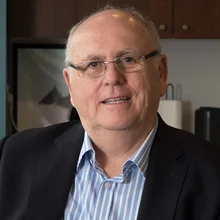
This article was paid for by a contributing third party.

Blog: How can insurers keep up when the future is being created every day?


Across the world, consumers, including insurance customers, are adopting new products and services according to their individual needs and their appetite for change.
Consumers who are innovators or early adopters will start to buy early. These will be followed by early majority, late majority and, eventually, laggards if they really have to. Think of CDs – players originally cost more than £1000 then became mass-market and eventually replaced cassette tapes.
All this, of course, depends on another innovation not disrupting this growing market. And if it does, we see this constant bubbling of growth curves, some very large, some small, as the future is created.
American academic Clayton Christensen, in his seminal 1997 book, The Innovator’s Dilemma, proposed that there were innovations that sustain existing markets, ones that create new markets and ones that are disruptive. The innovator’s dilemma is this: ‘doing the right thing is the wrong thing’. Making good decisions about welcome refinements to existing products and services may feel good but may blind us to that next future set of products and services that could eventually replace the ones insurers offer.
This brings to mind the words of Amazon CEO Jeff Bezos: “There’s a tendency, for executives to think that the right course of action is to stick to the knitting - stick with what you’re good at. That may be a generally good rule, but the problem is the world changes out from under you.”
So the corporate innovator in the insurance sector needs to decide the balance of spend on evolutionary change - protecting the customer base, revolutionary change - creating new markets, and disruptive innovation.
A three horizons framework, featured in The Alchemy of Growth by Mehrdad Baghai, Stephen Coley and David White, provides a structure for companies to assess potential opportunities for growth without neglecting performance in the present.
- Horizon one - represents those core businesses most readily identified with the company name and those that provide the greatest profits and cash flow. Here the focus is on improving performance to maximise the remaining value.
- Horizon two - encompasses emerging opportunities, including raising entrepreneurial ventures likely to generate substantial profits in the future but that could require considerable investment.
- Horizon three - contains ideas for profitable growth down the road—for instance, small ventures such as research projects, pilot programs, or minority stakes in new businesses.
Revolutionary change, that is creating new markets and disruptive innovation, poses the greatest problems for the corporate innovator: the adoption of an innovation in a market segment unrelated to insurance can lead to a progressive cascade of adoption in other segments (so-called ‘crossing the chasm’ or ‘diffusion’) and becoming mass-market. Early movers that succeed in less regulated industries seem to win big – look at Amazon, Expedia, Uber, Google, Facebook, etc. This cascade of adoption can lead to the launch of insurance products as a logical add-on by the unicorn, thus disrupting the insurance sector.
How should corporate strategists and innovators at insurance carriers address such disruptive scenarios?
First, corporate insurance innovators need to be well informed by futurologists. The revolutionary and disruptive opportunities are in the gaps caused by technology shifts, changes in social behaviour, regulatory direction, and environmental issues.
Second, strategies for playing in these gaps need to be chosen. An insurer has at least four main choices: be passive – wait for others to exploit the opportunities and see if you can do deals with them regarding customer insurance needs; break yourself up into several service companies and offer these new profit centres to emerging players; be engaged on relevant opportunities – invest in players, sign up insurance supply deals as partners, sponsor user communities thus becoming the known and underlying brand in this emerging element; or be aggressive - seek to dominate – pivot from just insurance, buy the emerging players, create the market, spin off new brands to create value.
Are most insurers pursuing passivity by default? Engagement on relevant opportunities is being actively sought by some insurers. This is creating new ways of engagement, new ways to understand users in the community (not just customers) and transforming these into new propositions.
One insurer saying it is doing this is Italy’s Generali. Its head of group innovation Volker Büttner comments: “We at Generali, together with our venture capital partners, have always been looking across industries to identify innovative technologies and companies that we can run pilots with and then apply at a larger scale to generate value, regardless of that definition. We partnered with many such companies in completely other verticals.”
What is yet to happen is the most radical step – insurers keeping insurance as a core but becoming brand builders in emerging markets using the financial muscle they have. Venture capitalists who also run insurance businesses.
Whatever the strategy an insurer pursues, developing an innovation culture is key to creating the future. Why? Let’s take the example of GE which is famous for its constant reinvention - often referred to as a 124-year-old start-up. It is now going through another period of transformation: to become the digital industrial company that transforms the world.
How does the company’s worldwide workforce of more than 310,000 keep pace with the GE rate of change and how does GE attract and inspire the next generation of global talent? “Cultural transformation is never-ending,” says Geoff Culbert, president and CEO of GE Australia and New Zealand, “and must engage all levels of the organisation to be effective.”
Sponsored content
Copyright Infopro Digital Limited. All rights reserved.
As outlined in our terms and conditions, https://www.infopro-digital.com/terms-and-conditions/subscriptions/ (point 2.4), printing is limited to a single copy.
If you would like to purchase additional rights please email info@postonline.co.uk
Copyright Infopro Digital Limited. All rights reserved.
You may share this content using our article tools. As outlined in our terms and conditions, https://www.infopro-digital.com/terms-and-conditions/subscriptions/ (clause 2.4), an Authorised User may only make one copy of the materials for their own personal use. You must also comply with the restrictions in clause 2.5.
If you would like to purchase additional rights please email info@postonline.co.uk
